|
|
| Interviste |
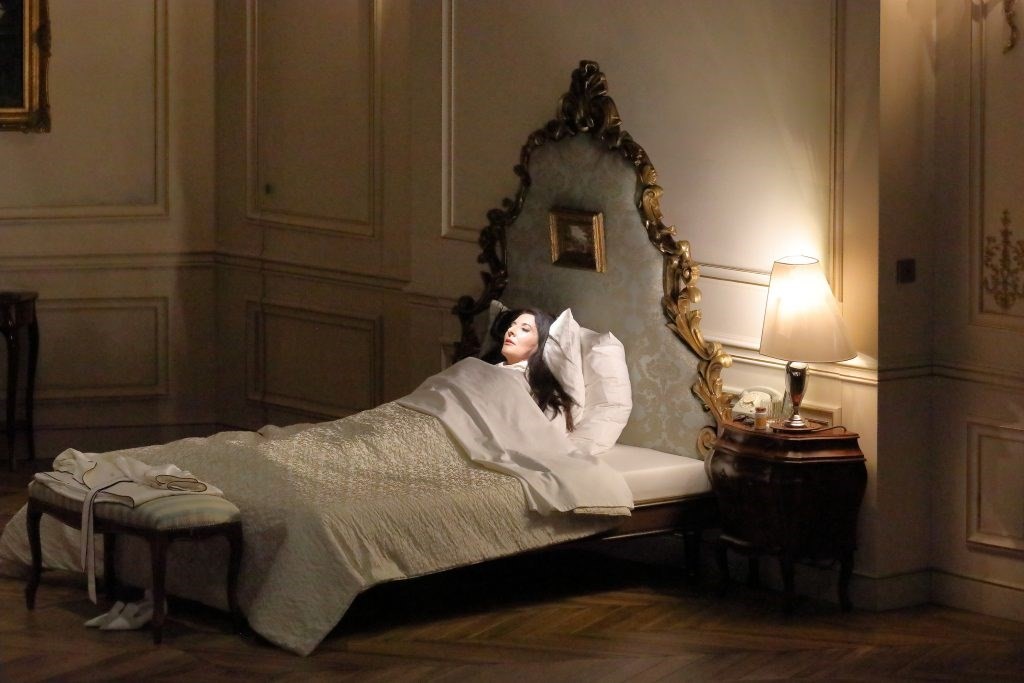 |
https://www.dazeddigital.com/art-photography/article/50314/1/marina-abramovic-7-deaths-of-maria-callas-surviving-heartbreak-death-opera
(online) Marina Abramović was 14-years-old when she first heard the devastatingly beautiful voice of Maria Callas.... (continua in questa pagina) |
| Trailer |
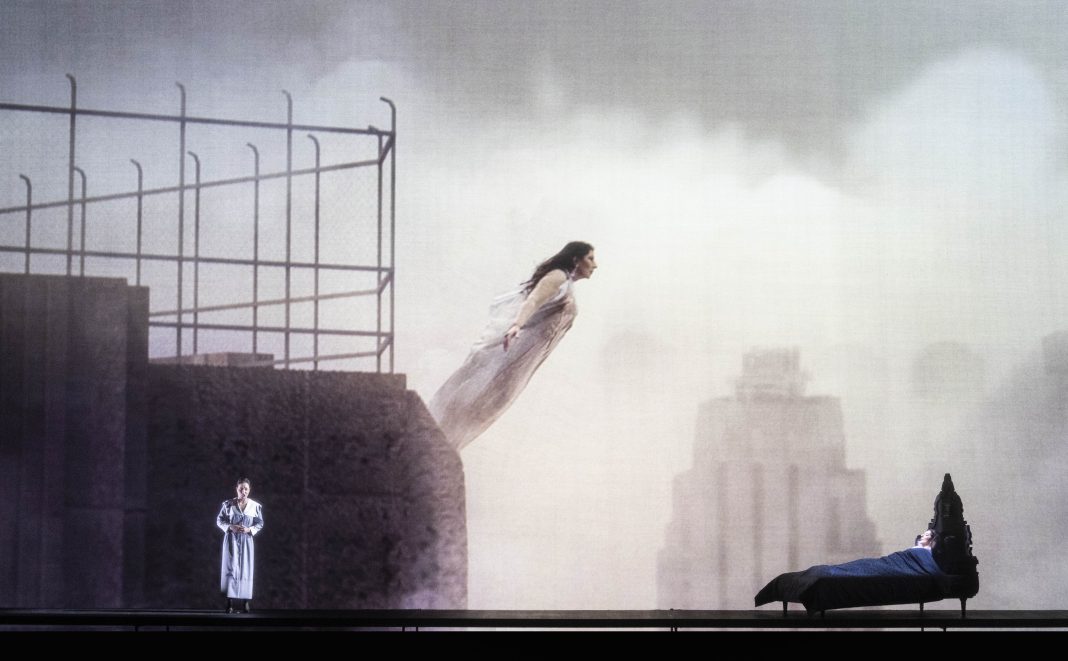 |
https://www.harrisonparrott.com/creative-partnerships-tours/collaborations-productions/marina-abramovic-7-deaths-of aprile 2020 al Bayerische Staatsoper di Monaco https://www.youtube.com/watch?v=Hv7iE7ZsRWQ Deutsche Opere Berlin https://www.lissongallery.com/exhibitions/marina-abramovic-seven-deaths Lisson Gallery Marina Abramovic Seven Deaths, London 14 settembre - 30 ottobre 2021 |
| Violetta Consumption |
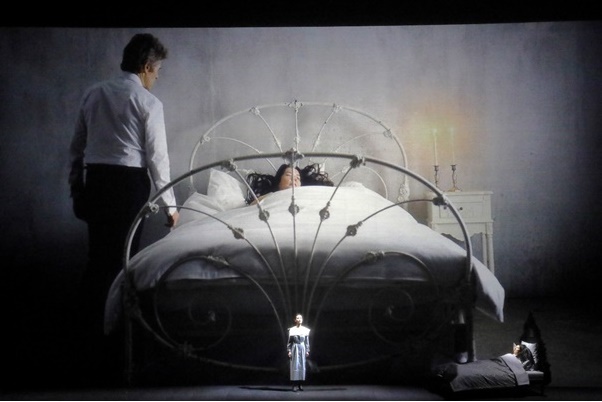 |
Addio
del passato https://soundcloud.com/operadeparis/7-deaths-of-maria-callas-saison-2122-hera-hyesang-park-violetta-valery-la-traviata Maria Callas 1952 https://www.youtube.com/watch?v=5d1HIyyTLvg |
| Desdemona Strangulation |
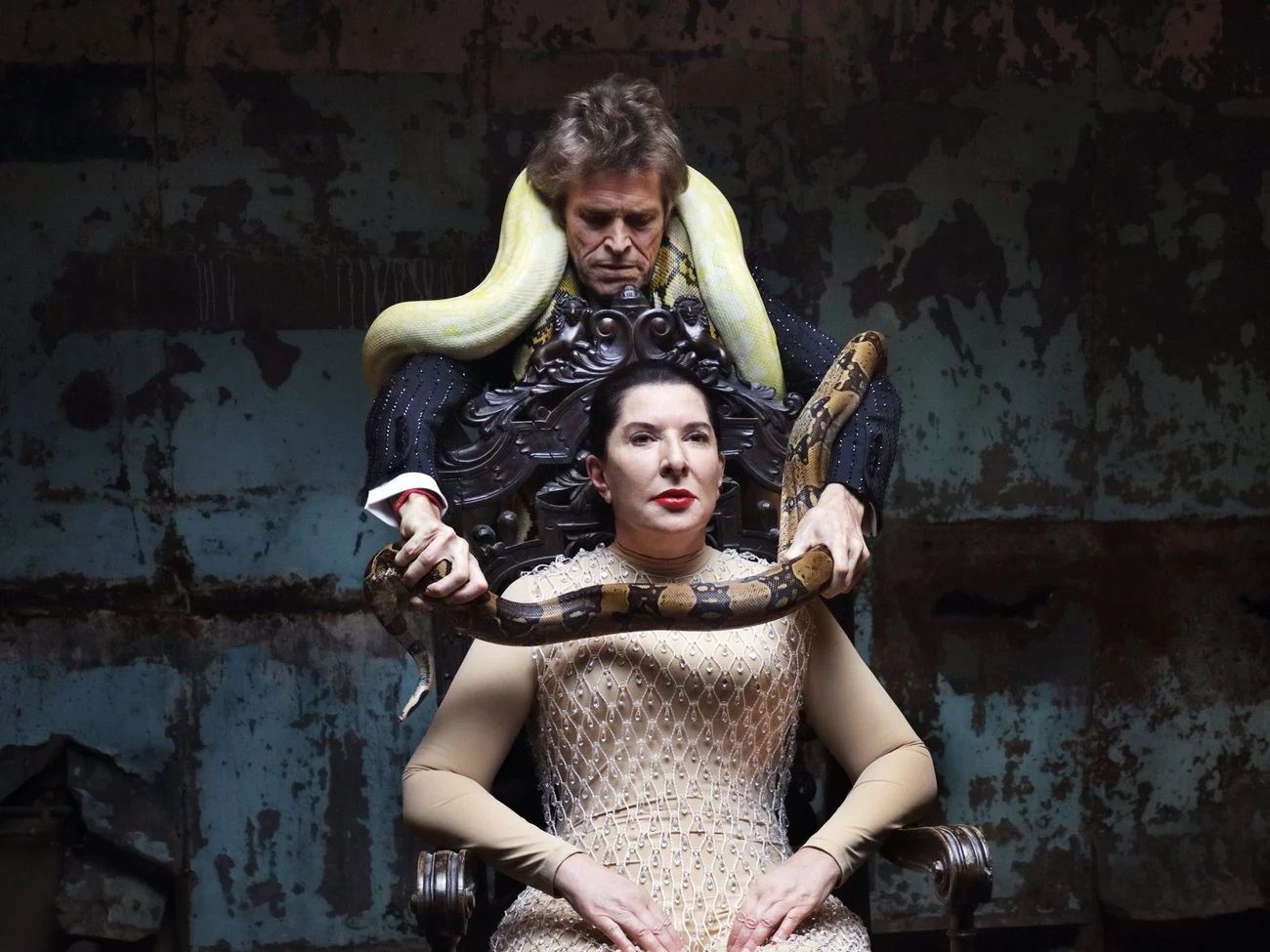 |
Ave
Maria https://www.youtube.com/watch?v=hpksR4txKU0 |
| Carmen Knifing |
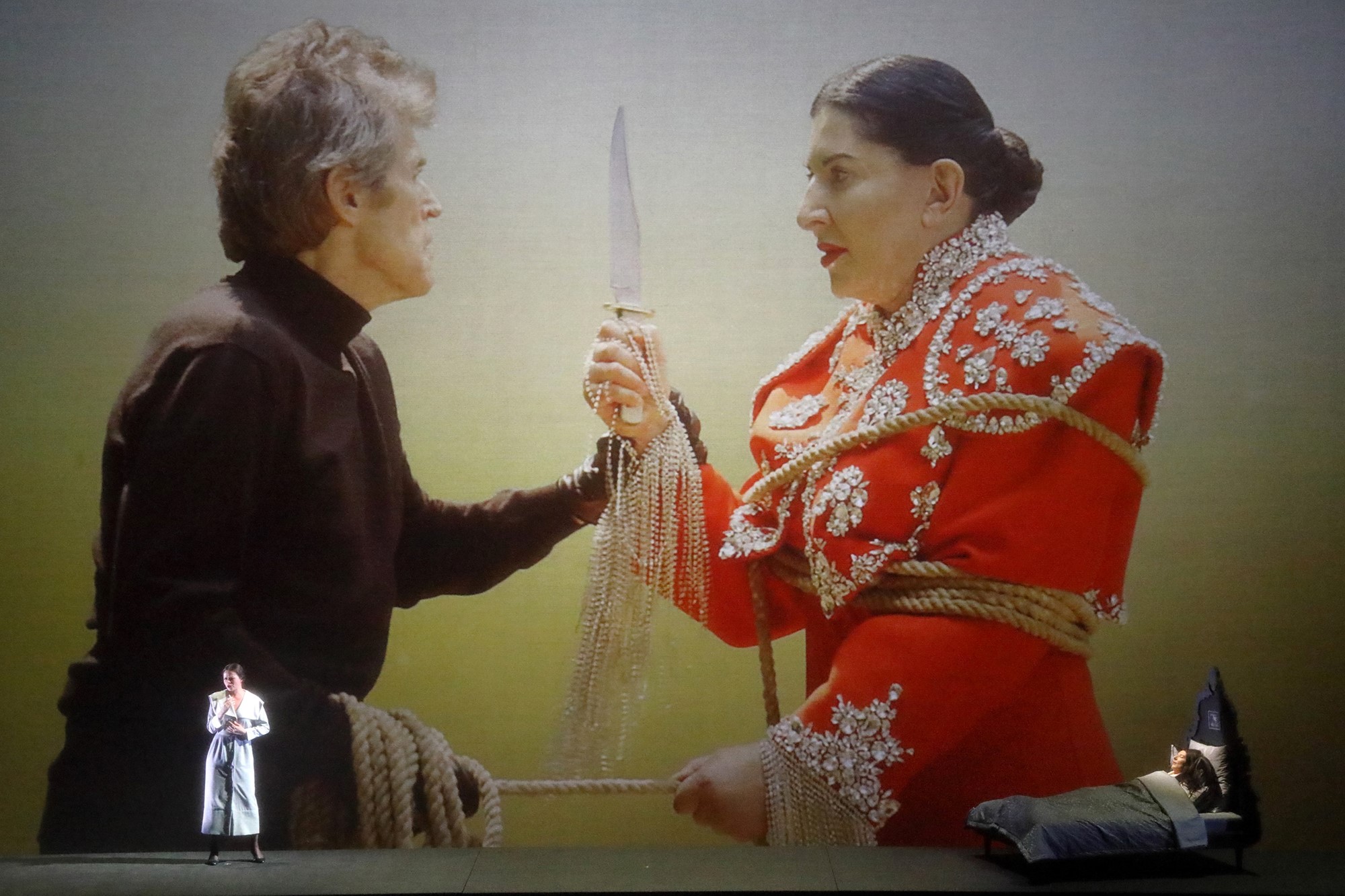 |
L'amour
est un oiseau rebelle https://www.youtube.com/watch?v=why_FJRJQS8 |
| Lucia Madness |
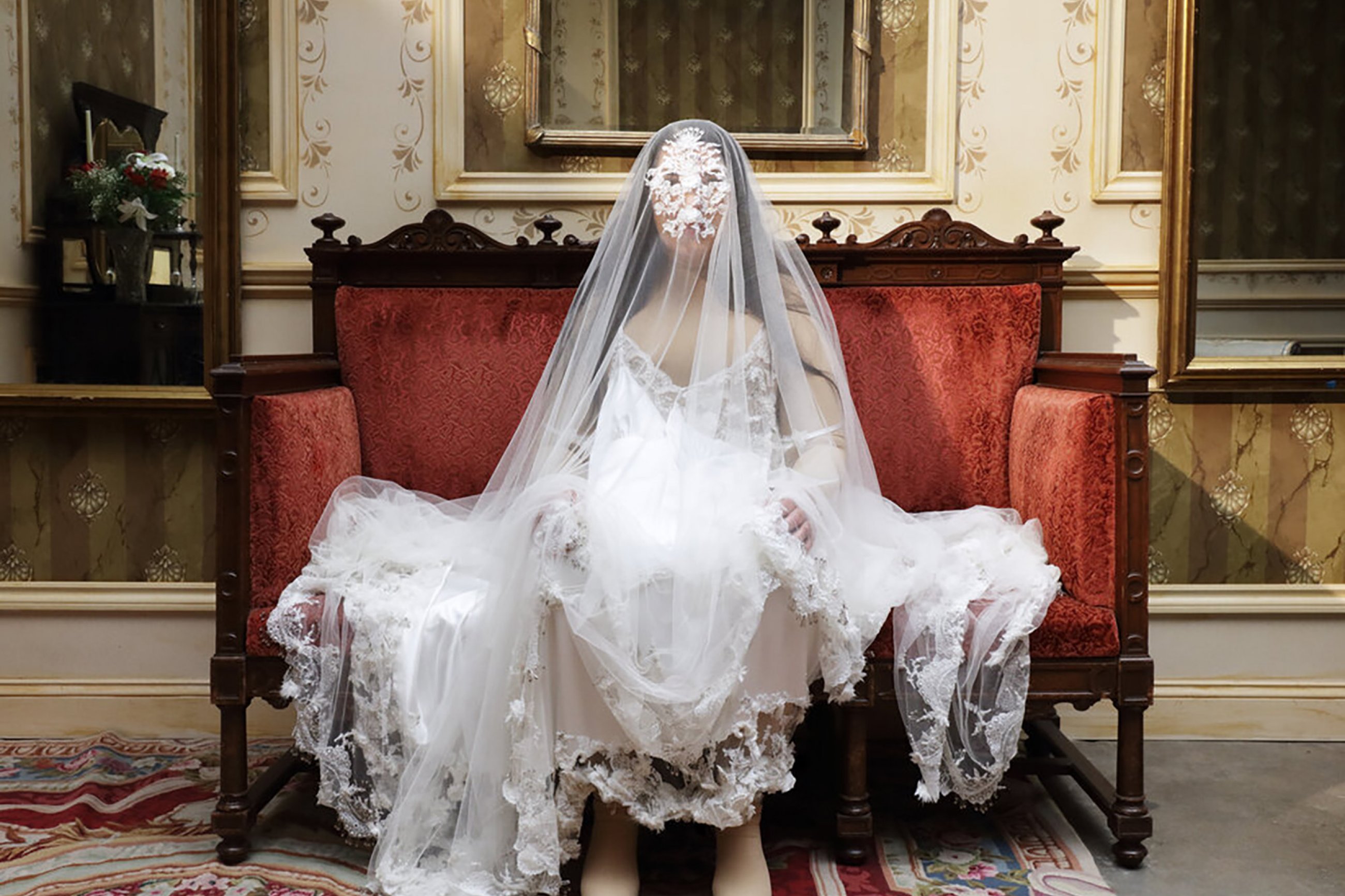 |
Scena
della follia - Il dolce suono https://www.youtube.com/watch?v=DEObuA-3HfY |
| Butterfy Hara-kiri |
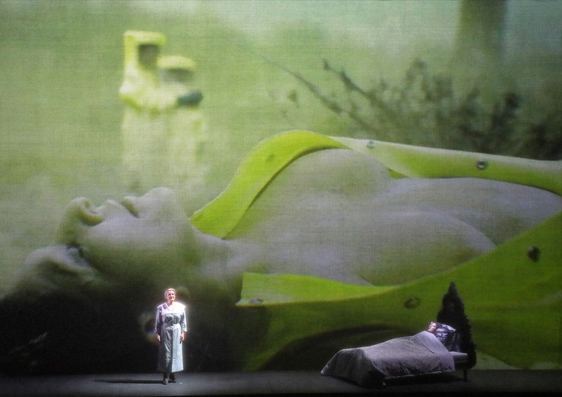 |
Un
bel dì vedremo https://www.youtube.com/watch?v=aN4OfZ4t8Gs |
| Norma Burning |
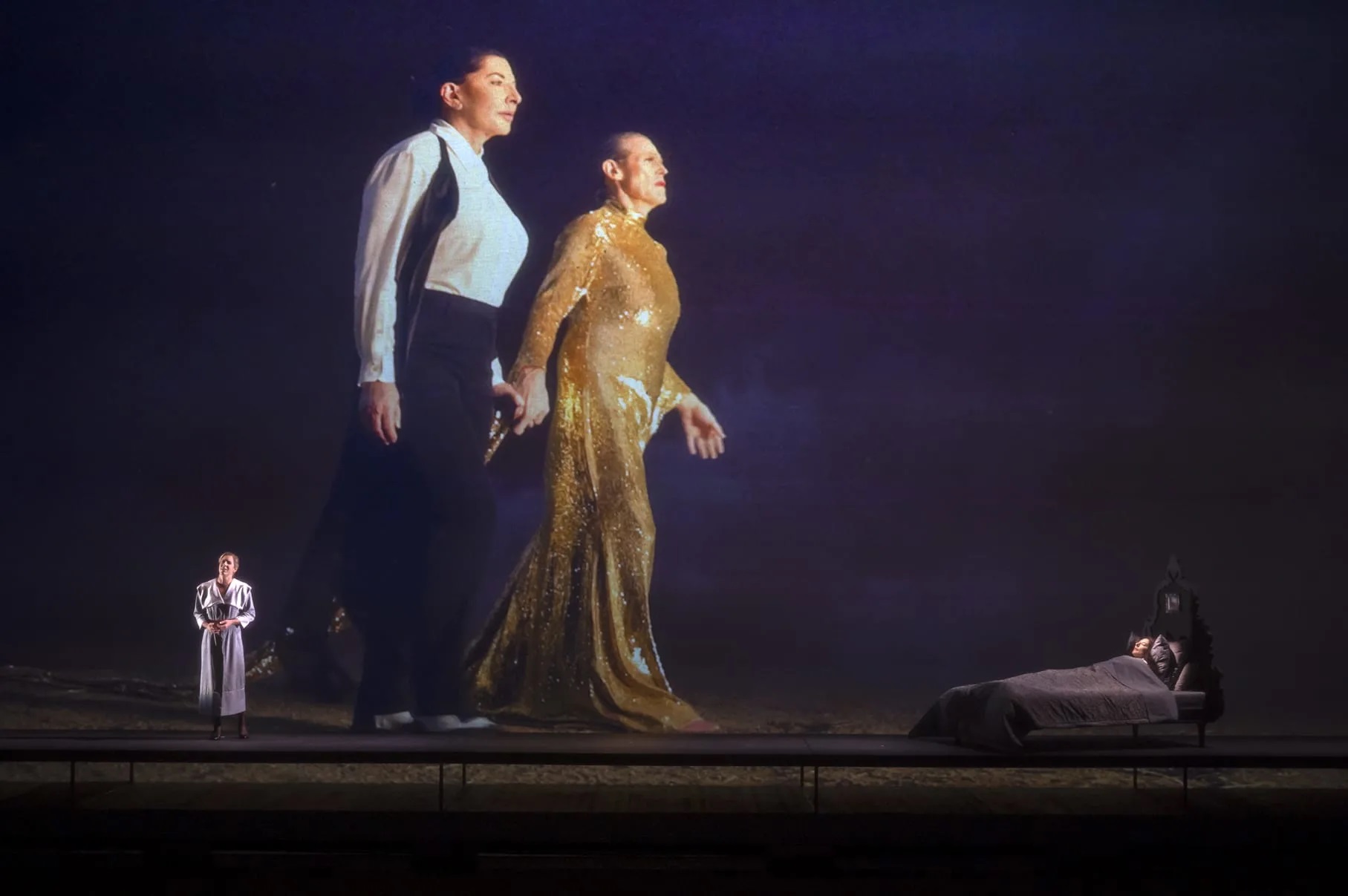 |
Casta
diva https://www.youtube.com/watch?v=7QoWCunToO0 Opera National de Paris Palais Garnier |
| Tosca Jumping |
Vissi
d'arte https://www.youtube.com/watch?v=WBFS8NDVIis Opera National de Paris Palais Garnier https://www.lissongallery.com/exhibitions/marina-abramovic-seven-deaths |
|
| Maria
Callas |
 |
Morte
di Maria Callas https://www.youtube.com/watch?v=rfRWP1jQ7zU |
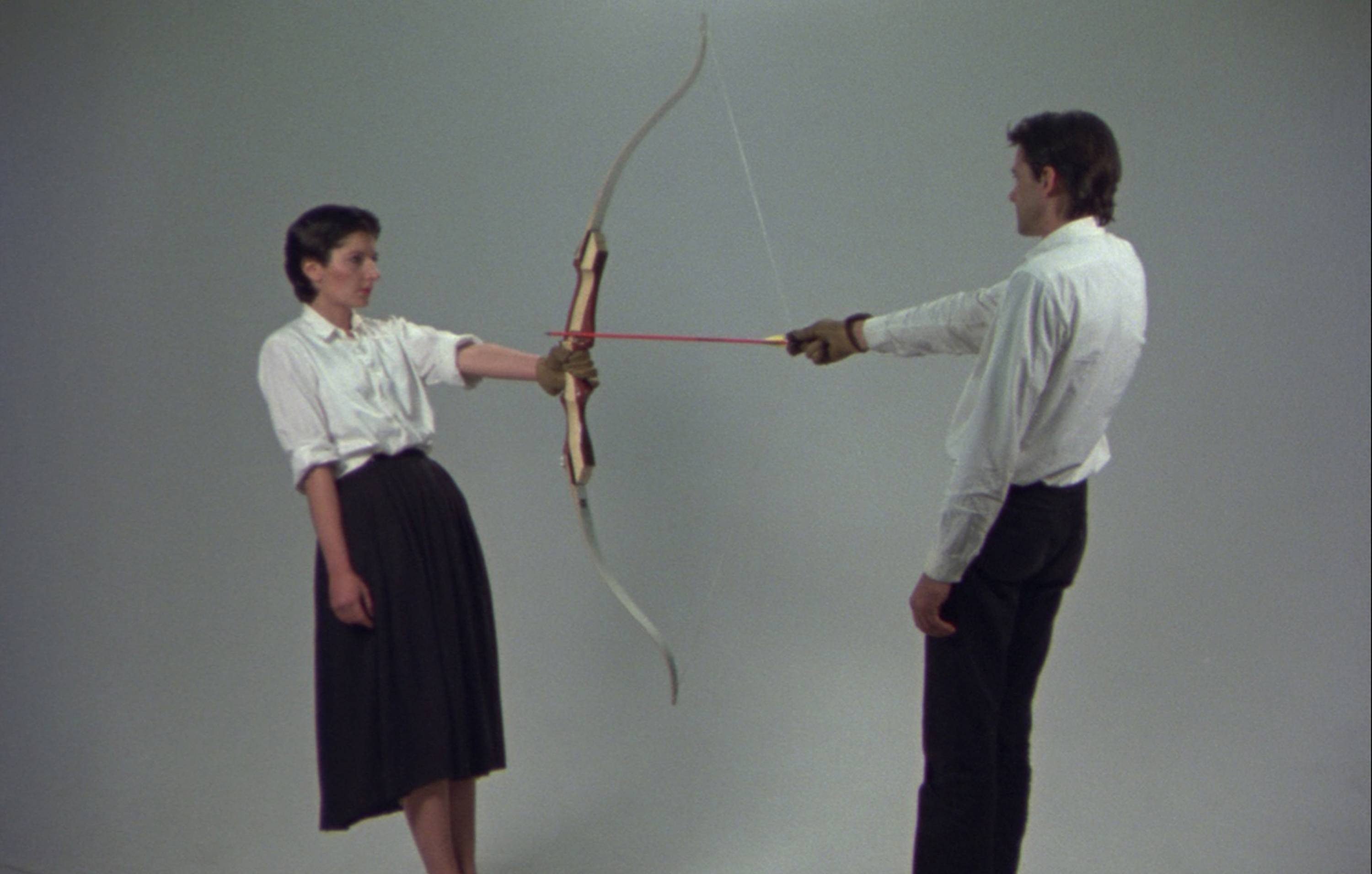 |
«Voglio mettere in scena le morti di sette opere che Maria Callas ha interpretato prima di me. In molte scene, la figura dell’opera non muore da sola, ma viene uccisa da un uomo. Per Maria Callas, l’uomo che la uccide sul palcoscenico dell’opera è sempre stato Aristoteles Onassis» Marina Abramović https://www.exibart.com/arti-performative/le-7-morti-di-maria-callas-interpretate-da-marina-abramovic-anche-in-streaming/ | |
| Marina
e Ulay |
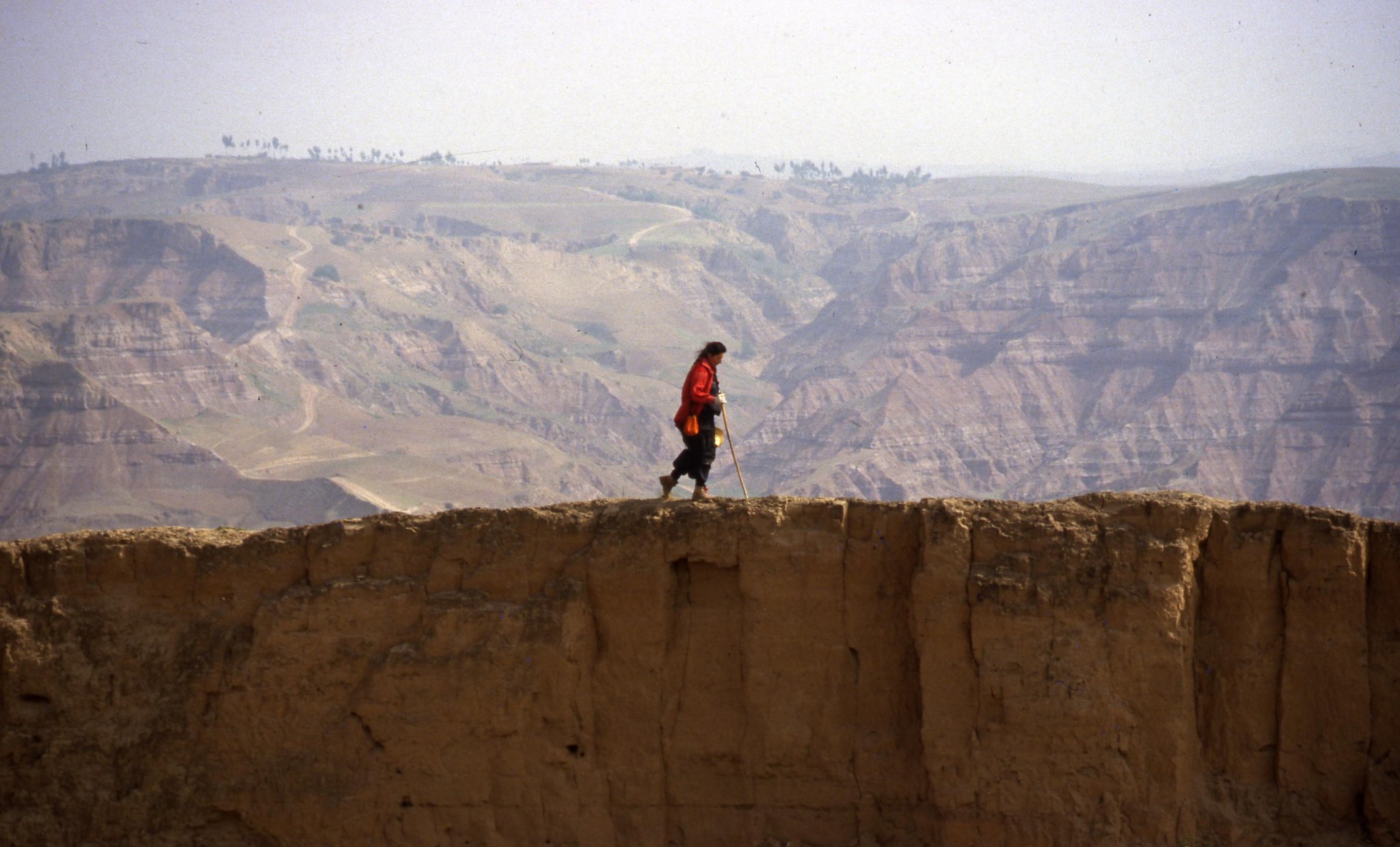 |
https://www.youtube.com/watch?v=OS0Tg0IjCp4;
|
| Marina
e Ulay |
 |
Arte
viva: nessuna dimora fissa, movimento permanente,
contatto diretto, relazione locale, autoselezione,
superare i limiti, assunzione dei rischi, energia in
movimento, nessuna prova, nessuna fine prefissata,
nessuna replica, vulnerabilità estesa, esposizione
al caso, reazioni primarie. |
| Marina
e Ulay 1983 |
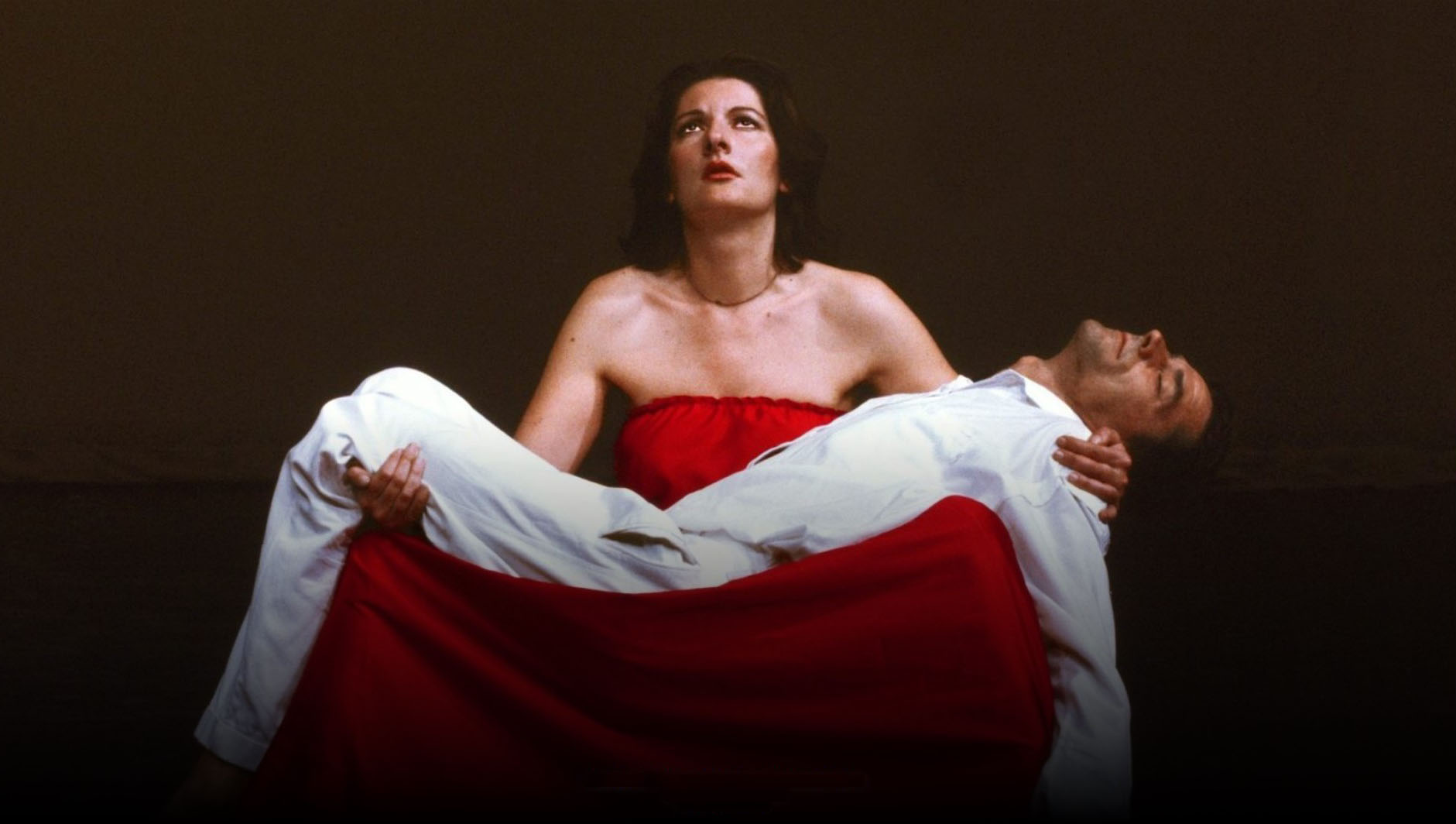 |
Immagine
tratta da https://thevision.com/cultura/marina-abramovic-ulay/ Marina Abramović/Ulay, Anima Mundi (Pietà), 1983/2002 (Courtesy of Marina Abramović Archives e Galleria Lia Rumma, Milano/Napoli, immagine e informazioni: http://www.glitchmagazine.eu/arte/2018/10/08/marina-abramovic-la-regina-della-performance-art-mostra-palazzo-strozzi/) |
| Marina
e Ulay, 2010 |
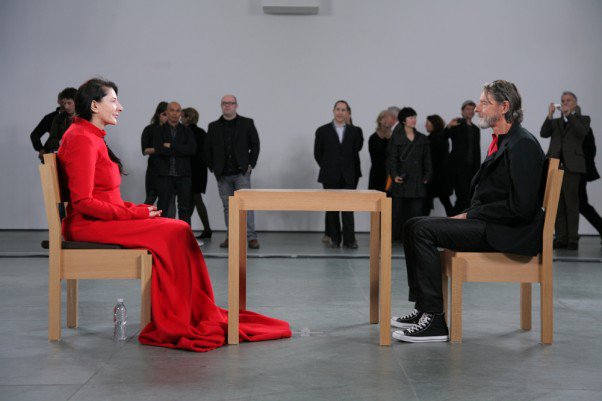 |
The Artist
is Present. MOMA 2010 L'estetica senza etica è cosmetica. (Ulay) No comment. Solo questo: il viaggio per venire a NY con sua moglie glielo ha pagato Marina. E nel video lui appare imbarazzato, lei commossa. Se poi l'incontro fosse stato preparato, varrebbe la stessa osservazione. La Pietà riprodotta nella morte di Tosca racconta come la donna non possa salvare l'uomo, anche se è pronta a sacrificarsi, anche se uccide per salvare il suo amore. O forse proprio per questo, perché agisce all'interno della logica maschile. |
| Marina Abramović |  |
If
you have a talent as she had, she didn’t have the
right to stop, she didn’t have the right to destroy
her life. That’s a strong statement. (M.A., conclusione
dell'intervista
citata sotto) C'è un passaggio generazionale fra Callas e Abramović: non che per le donne nate dopo la guerra sia facile, anzi, è probabilmente ancora impossibile salvare l'amato e salvarsi agendo quanto gli uomini, uccidendo il nemico dell'amore, il baritono Scarpia difensore dell'ordine, nel caso di Tosca, la cantante come Callas e performer come Marina, la sola fra le sette donne di questi melodrammi. Le donne soffrono in eterno per amore e in eterno muoiono in tanti modi. È un tema che, a me come donna, sta molto a cuore. Il mio lavoro è molto emozionale, tocca l’amore, la morte, il dolore, la sofferenza, la perdita, il tradimento: temi di cui è fatta l’arte. (M.A., 7 Deaths of Maria Callas, Damiani Editore, 2020) Voglio mettere in scena le morti di sette opere che Maria Callas ha interpretato prima di me. In molte scene, la figura dell’opera non muore da sola, ma viene uccisa da un uomo. Per Maria Callas, l’uomo che la uccide sul palcoscenico dell’opera è sempre stato Aristoteles Onassis. (M.A., https://www.exibart) |
| https://www.dazeddigital.com/art-photography/article/50314/1/marina-abramovic-7-deaths-of-maria-callas-surviving-heartbreak-death-opera Marina Abramović was 14-years-old when she first heard the devastatingly beautiful voice of Maria Callas, and it’s haunted her ever since. In conversation with Nikolaus Bachler, the director of the Bayerische Staatsoper, she recalled, “I don’t know what I was doing, but I was in the kitchen with my grandmother, and I remember that I froze. Literally, time stopped, nothing was moving. I put the radio on maximum and this voice was just filling the space… there was electricity in the air.” For anyone unfamiliar with Maria Callas, she is widely regarded as one of the most influential opera singers of all time. Her reputation as the original diva (“La Divina”), her so-called temperamental behaviour, and the romantic scandals that so publicly dogged her private life, have become almost as much a part of Callas’ enduring mythology as her celebrated voice. The fated love affair with Greek shipping magnate, Aristotle Onassis (which destroyed her marriage, and, according to speculation, continued to dominate her heart even when Onassis married John F. Kennedy’s widow Jackie Kennedy) was one of the great sources of sadness of Callas’ relatively short life. Based on an idea she first had more than 30 years ago, Abramović’s latest work is an opera that pays tribute to Callas’ life and her transcendent talent. Munich’s Bayerische Staatsoper (the Bavarian State Opera) is hosting 7 Deaths of Maria Callas, an opera featuring seven vocalists each embodying a different on-stage incarnation of the legendary soprano. 7 Death of Maria Callas moves through the dramatic climax of seven arias, focusing on the moments of her on-stage death. Abramović concludes the show herself by enacting the real death of Callas (who died alone of a heart attack in 1977, in the grand Paris apartment where she’d spent her last years living in exile and isolation). As a hugely multi-media production, it includes elements of new music, performance, and video, includes costumes by Burberry’s chief creative officer, Riccardo Tisci, and films featuring Willem Dafoe as Abramović’s recurring assassin (a figure who represents Aristotle Onassis – the man who Abramović conceptualises as the personification of her heartbreak). Below, I talk to Abramović about surviving heartbreak, death, and her lifelong affinity with Maria Callas. ------------------- Marina Abramović was 14-years-old when she first heard the devastatingly beautiful voice of Maria Callas, and it’s haunted her ever since. In conversation with Nikolaus Bachler, the director of the Bayerische Staatsoper, she recalled, “I don’t know what I was doing, but I was in the kitchen with my grandmother, and I remember that I froze. Literally, time stopped, nothing was moving. I put the radio on maximum and this voice was just filling the space… there was electricity in the air.” For anyone unfamiliar with Maria Callas, she is widely regarded as one of the most influential opera singers of all time. Her reputation as the original diva (“La Divina”), her so-called temperamental behaviour, and the romantic scandals that so publicly dogged her private life, have become almost as much a part of Callas’ enduring mythology as her celebrated voice. The fated love affair with Greek shipping magnate, Aristotle Onassis (which destroyed her marriage, and, according to speculation, continued to dominate her heart even when Onassis married John F. Kennedy’s widow Jackie Kennedy) was one of the great sources of sadness of Callas’ relatively short life. Based on an idea she first had more than 30 years ago, Abramović’s latest work is an opera that pays tribute to Callas’ life and her transcendent talent. Munich’s Bayerische Staatsoper (the Bavarian State Opera) is hosting 7 Deaths of Maria Callas, an opera featuring seven vocalists each embodying a different on-stage incarnation of the legendary soprano. 7 Death of Maria Callas moves through the dramatic climax of seven arias, focusing on the moments of her on-stage death. Abramović concludes the show herself by enacting the real death of Callas (who died alone of a heart attack in 1977, in the grand Paris apartment where she’d spent her last years living in exile and isolation). As a hugely multi-media production, it includes elements of new music, performance, and video, includes costumes by Burberry’s chief creative officer, Riccardo Tisci, and films featuring Willem Dafoe as Abramović’s recurring assassin (a figure who represents Aristotle Onassis – the man who Abramović conceptualises as the personification of her heartbreak). Below, I talk to Abramović about surviving heartbreak, death, and her lifelong affinity with Maria Callas. READ MORE This particular project, 7 Deaths of Maria Callas, has really captured my imagination. You’ve carried this idea with you for 30 years. Why is it such an enduring idea to you? And, why now, after all these years, is it the right time to make this work? Marina Abramović: I had the idea for a long, long time because I was very much touched by Maria Callas. I had a very similar experience of a broken heart as she did. She died but I didn’t die, and my work really saved me after that. I’ve always wanted to address this problem, and dying for love is something that is always there. As long as human beings exist, we all die. We all have at least one experience of loving so much that we want to die – or, we don’t die, but we have broken hearts. It happened by chance that when we started rehearsal in March for the premiere in April we were struck with Coronavirus. It was a pandemic, everything was closed, and everything stopped. But I didn’t want to stop this project because it has nothing to do with viruses and we didn’t make the project to be in the same time as the Coronavirus moment. In my life, I don’t give up easily. Once I want to do something, I have to do it – even if it takes 30 years. To walk the Great Wall of China, it took me eight years to get Chinese permission. Seven Easy Pieces at the Guggenheim took me 12 years. Time doesn’t mean anything, but this was the time to do (this opera). Has working in the conditions of Coronavirus – the element of risk created by the pandemic – infused the project with an extra kind of energy or urgency? Marina Abramović: It’s very important not to give up to the virus; not to get depressed and not to have a fear of uncertainty. Everybody is so afraid that they can’t plan anything; everybody is so afraid of nothing to do; to be with themselves. I really think we have to have more humour in this whole situation and continue working. We succeeded with opera rehearsals with social distancing. I’ve been tested during the rehearsals eight times. The entire opera – 600 people – have been tested every week in this place. Every single person who enters is still wearing a mask, still social distancing, and we’re all tested. The Germans took this to another level. In America, you get the test and the results take five to seven days, and it’s already old. So we have really great conditions here to actually work with the virus and keep it in perspective. Apart from the logistical implications of COVID-19, it’s bound to change people’s feelings about proximity and intimacy. Obviously a lot of your work involves interactions with an audience. How do you think this may impact your work? Marina Abramović: This kind of distancing and how differently people relate to each other, it already started long before the virus with technology. All the texting, tweets, Instagrams... young people don’t talk to each other. All the dating is online, through computers. It already alienated human beings. When I created The Abramović Method I was especially thinking how important human contact is. Human touch.I think that the virus is finally going to end, like every virus in the history of humanity. If this is going away, are we going to have to go through the same problems and mistakes again? Or will the virus change our perception? I really hope it will change, and we will understand how nature and human contact is important. Also, to go back to simplicity. Everything is too much. We’re looking to fashion and art too much. How many artists (are there) whose art has become a commodity? Everything is over the top. We need to get back to simplicity, otherwise we are really lost. I’m so interested in the notion of heartbreak and what you’ve said about how it’s such a unifying experience for humans, and that the idea of dying of heartbreak is very close to your heart. Do you think that this is the ultimate fantasy for anyone with a romantic temperament? Marina Abramović: It’s very romantic but, at the same time, it needs to be cured. When you make something about your broken heart and you go through these heavy emotions, you come out the other side healed. Healing is very important to me. One of the effects of this work should be that humans can always project their own feelings into this project and they can heal. The broken heart takes time, but you can come to heal on the other side. I chose seven operas which Maria Callas sings, seven operas where she dies at the end. And this is dying of tuberculosis in La traviata, dying of strangulation in Othello, jumping to her death in Tosca, a knifing in Carmen, burning alive in Norma, dying from madness in Lucia di Lammermoor, and in Madame Butterfly she didn’t make her killing, she dies in my case from radiation, so I introduce new elements. They all died from different deaths, and then there is the death of Maria Callas herself, which I’m playing the part of. In the end, she disappears and all you have left is the voice. So, the body can die but the voice can actually never die. Once you have such talent and you share it with the people, the people make you live forever. So this was really a work of hope in so many ways. And I just want to say that, for this production, I have an incredible crew to work with. They’ve done as much work as me to complete the struggle. We had a really great group of people (see below for full credits). Because this production is a mix between the live performance, live stream, Bavarian State Orchestra, and the video works, so it’s mixed media. And, you know, the normal opera is more than three, four, or five hours long but, because dying is so short, this is only one and a half hours. You describe Maria Callas’ voice as being eternal, and you once described the moment you first heard her voice on the radio when you were 14, and how it affected you so profoundly. What was the nature of that affinity you felt? Marina Abramović: Emotions. An incredible rush of pain that made me cry even though I didn’t understand arias – I didn’t understand anything. But voice is vibration and that vibration really went into my heart. It was so full of emotions of sadness. I find it fascinating your idea that, for Maria Callas, the man who killed her on the opera stage was always, in her heart, Aristotle Onassis, her lover. Marina Abramović: In my mind, yes, he’s the one who’s killing her. This is why I chose Willem Dafoe, who is actually killing me over and over again in all those different arias. But, another thing, Riccardo Tisci dresses every singer in a French maid’s costume because Maria Callas’ maid, Bruna, was very important to her and when she died, she left everything to her. She was the only one who was with her through all this, who witnessed all the pain, and so every singer who sings each different opera is dressed like Bruna. There is one moment when seven Brunas are coming in to clean the room and close it, and that’s the end. What do you think it is about the moment of death that’s so compelling for us as an audience? Marina Abramović: There are really two different types of death in the public perception. If you look at television news and you see a real death – somebody cut the head off somebody else, or the torture in the wars everywhere around the world, from Syria to Afghanistan. That, we don’t like to see. We immediately change the channel because you don’t want to have this image in your head. But if you see the stage death in film or in opera, and it’s a very beautiful death, then you cry, and you identify with this kind of death. So there are two types of death: really brutal, real death, and death on the stage. It’s interesting how humans never want to see reality. You say in your autobiography, ‘Could art, or should art be isolated from life? I began to feel more and more strongly that art must be life.’ And I wondered if you had any advice on how we can all bring more art into our own lives every day? Marina Abramović: I don’t have any advice. I think you have to wish it yourself. Nobody can actually pester you that you need more art. It doesn’t even mean you need more art or you don’t need more art. It’s much more important for every human being to live in the present. When you live in the present, you see things differently: you perceive nature differently, you see shadows on the wall differently, and you can see art with absolutely more clear eyes. We always live in the past and future, but we forget the present, but the present is the only reality we have. So when you’re really in the present, art offers to you, but you can’t do this if you’re not in the present or if you just take it intellectually. You have to take art by heart. What what do you think we learn from these grand romantic narratives, like the story of Maria Callas? Marina Abramović: If you have a talent as she had, she didn’t have the right to stop, she didn’t have the right to destroy her life. That’s a strong statement. |
Nel 2023 Marina Abramović sarà a Londra con Seven Deaths of Maria Callas https://www.rainews.it/tgr/campania/video/2022/06/marina-abramovic-84234b07-f650-4a47-8a06-e8eea0b5c40f.html As Abramović recalls, her coup de foudre for Callas at 14 quickly developed into a more rooted passion, fuelled by similarities between the two women’s biographies. This identification constitutes the very premise of 7 Deaths of Maria Callas – a superimposition of Maria and Marina, where the latter lends her body to the former and re-enacts her death. However, the assimilation comes with strings attached: just like Abramović knows death through performance, so did Callas, whose reputation as a singer is closely tied to her renditions of tragic roles. By performing the role of a performer, Abramović extends the network of resemblances to Callas’ own characters. The interplay of correspondences conjures up the image of two mirrors facing each other, reflecting a figure ad infinitum. Abramović’s personal experience is thus expanded towards a collective dimension, where she is at once herself, another and every woman. (https://bachtrack.com/review-7-deaths-maria-callas-abramovic-teatro-san-carlo-naples-may-2022) |